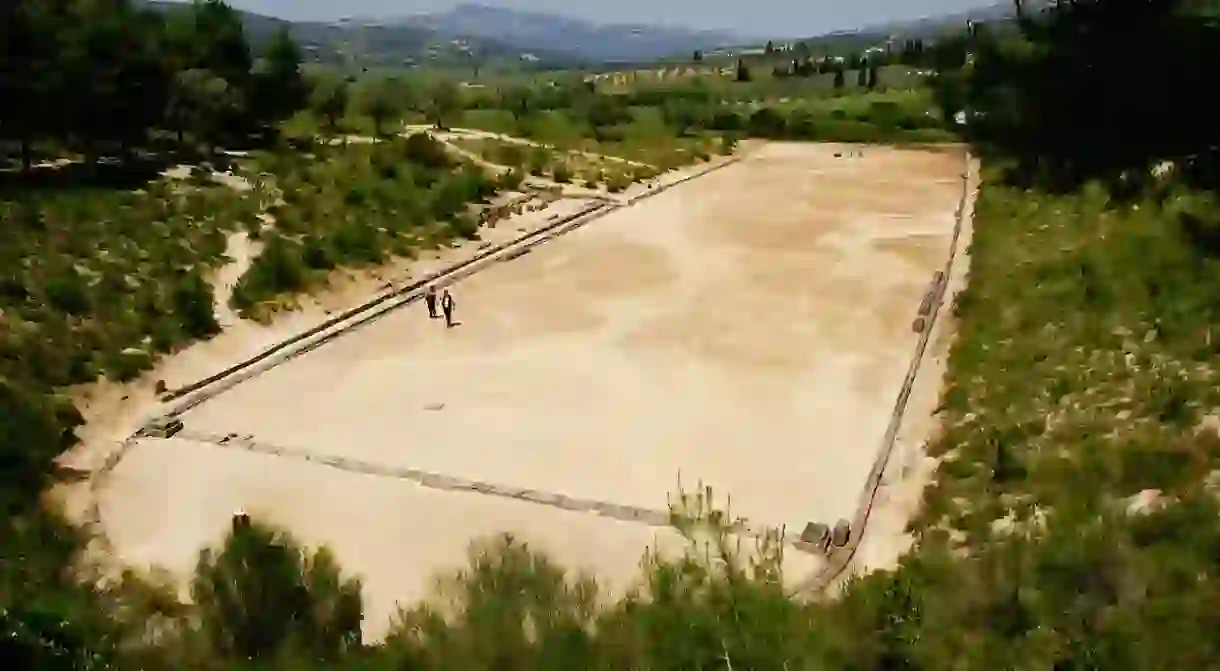A History of Sprinting At The Olympics

Running is one of the simplest competitions in the history of mankind. No team is needed. No expensive equipment is required. It’s one person against at least one other competitor.
That’s why running, especially sprinting, has been part of the Olympics since their inception.
Stadion (or stade), was an ancient running event that was part of the Olympic Games and other Panhellenic Games. From 776 to 724 BC, the stadion was the only event at the Olympic Games; the victor gave his name to the entire four-year Olympiad. The winner of the stadion at the first Olympic Games was Coroebus of Elis.
The stadion, named for the facility in which it took place, was simple: run the length of the arena, which was approximately 200 yards (180 meters). Since then, sprinting has evolved and grown immensely since the first barefoot and naked competitors ran the stadion on that exposed ground.
When the modern Olympic Games began in 1896, sprinters ran a 100-meter dash and 400-meter dash. A 200-meter dash was added in 1900, and relay races with teams of four sprinters each were added for the 1912 Games. Women’s sprint events were included in 1928.
Not only have the events changed, but the format has evolved as well.
Ropes were used to separate sprinting lanes. Sprinters first started races standing straight up before utilizing the crouched position. Synthetic tracks came into use in 1956. Starting blocks only arrived in 1984.
Tracks have improved, apparel and shoes have gotten lighter and more streamlined, and as a result of these improvements coupled with new training techniques, sprinters have gotten faster.
Thomas Burke (USA) won the first-ever 100-meter dash in 12.0 seconds at the 1896 Games in Athens. The times would only lessen from there.
Archie Hahn (USA) won gold in the event in 1904 with a time of 11.0 seconds and repeated the feat in 1906 in 11.2 seconds. Jesse Owens (USA) raced to the gold at 10.3 seconds in 1936 in Berlin.
Jim Hines (USA) was the first person to break the 10-second mark in the 100m at the Olympics with his gold-medal winning time of 9.95 seconds at the 1968 Games in Mexico City. Carl Lewis (USA) won gold in 1984 in Los Angeles at 9.99 seconds and his 9.92 seconds in 1988 in Seoul was an Olympic record.
Usain Bolt (Jamaica) won the 100m — for a record third consecutive Olympics — with a time of 9.81 seconds at the 2016 Olympics in Rio.
Thanks for all the support my peeps #blessed #TeamBolt #TeamJamaica #Rio2016 pic.twitter.com/rGFaLH8hP9
— Usain St. Leo Bolt (@usainbolt) August 15, 2016
In fact, the eight men in the 2016 Olympic final had times of 10.06 seconds or better, which trump Burke’s mark from 1896 by a whopping two seconds — a lot in sprinting!
Bolt has become the standard bearer when it comes to sprinting. He is regarded as the fastest person ever timed. His 100-meter time of 9.58 seconds set at the 2009 Track & Field Championships in Berlin is the world record. He is the first man to hold both world records in the 100m and 200m since fully automatic timing became mandatory.
He can (again) write his name in the history books with a gold medal in the 200m final Thursday. Bolt would become the first athlete — male or female — to win three-straight Olympic gold medals in the event.
Don’t blink or you might miss it.













